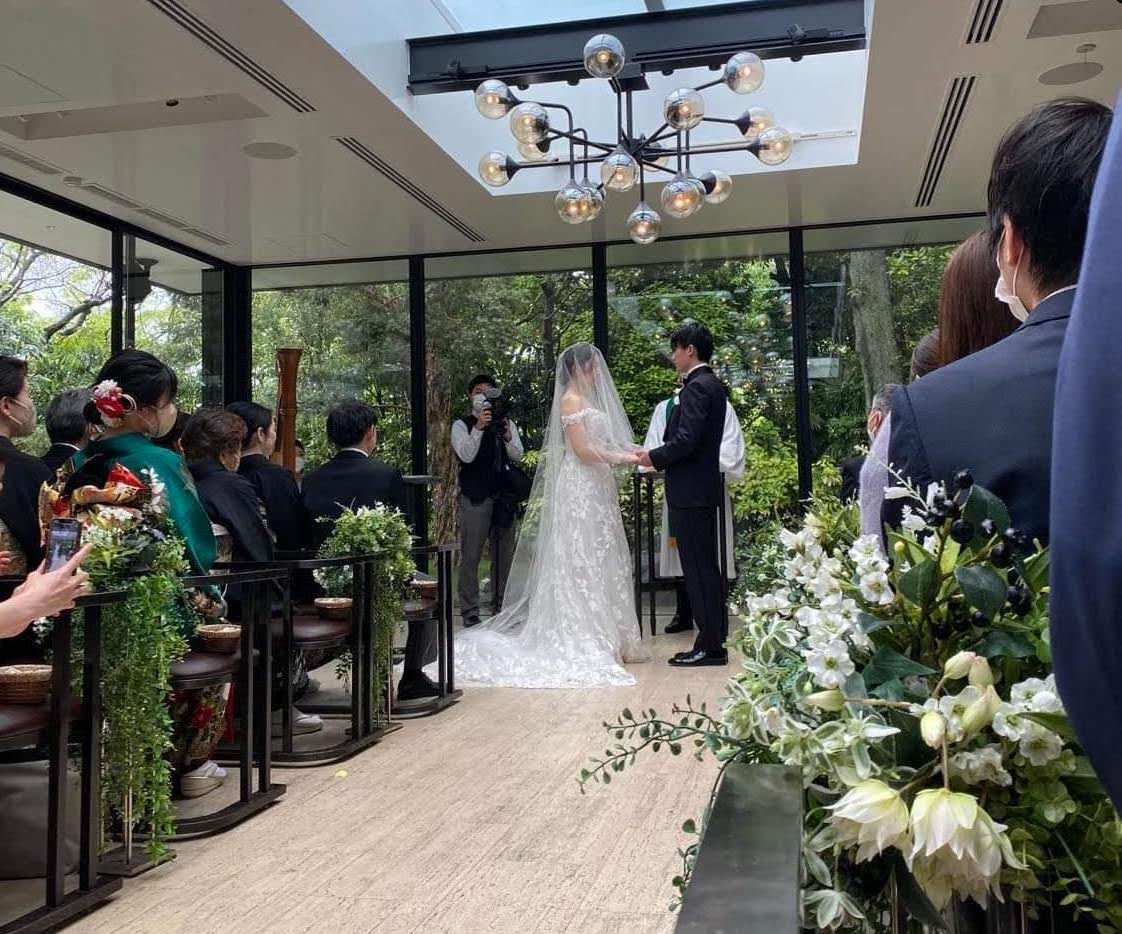Why Saying 'I Do' in Japan is More Interesting than You'd Think?
“Born a Shinto, marry as a Christian, and die a Buddhist.” A little about the fake priests who who marry Japanese people at “Christian” weddings

Japanese people borrow certain cultural norms and traditions from the West, as a result of their sometimes complicated history with that part of the world. One of these traditions is weddings — the Western-style Christian chapel wedding. In a country where 1% of people identify as Christian, it may seem odd. But it isn’t about the religion behind these weddings that is attractive, but rather the aesthetic. It is walking down an aisle in a beautiful white dress and a ceremony in a high ceiling beautiful chapel. It is the exchange of rings, having a veil held, a flower girl, and more.
While many things are needed to conduct a wedding of this sort, one important part is a priest. As you might guess, when most of the population is not Christian, it might be a little difficult to hire a priest to officiate a wedding. So what do Japanese people do instead?
Simple: hire a fake priest.
A little about religion in Japan
There is a saying that Japanese are “Born a Shinto, marry as a Christian, and die a Buddhist.” While most Japanese people do not partake in organized religious activities, many do partake in cultural events and traditions based upon religion.
There are many traditions in Japan centered around these two religions aside from birth and funerals such as New Years, Obon festival, and Gion Festival. Weddings are among one of the events that can be held according to Shinto or Buddhist marriage practices; however, Japanese people seem to prefer the Christian-style weddings.
In 2016, the Ministry of Education, Culture, Sports, Science and Technology estimated that there are about 80,000 shrines (Shintoism) and 77,000 temples (Buddhism) in Japan. Since most Japanese are not Christian, as one might expect, there are not many churches in Japan. Compared with the 157,00 combined shrines and temples, there are estimated to be a little less than 6,000 Churches.
Despite so little Christians, almost 60% of weddings are Christian “Chapel” style weddings. When demand for these ceremonies outstrips supply of churches and priests, what happens? A supply of fake priests (ニセ牧師 nisebokushi) and wedding venues for these weddings. Lets break down the Kanji:
ニセ: Fake, Imitation 牧師: pastor; minister
Christian-style weddings

Many Western-style weddings are held at wedding venues (some are like fake chapels), or hotels for example. This is where fake priests will conduct the wedding ceremonies.
Because Japanese people are not very religious, whether their wedding is conducted by a real priest or not does not cause much concern. It is the aesthetic and image that are important.
After some research, it appears that the demand for Western-style weddings was fueled by the televised wedding of Prince Charles and Diana in the 1980s. However, this trend could have been set even earlier. The book The Birth of Wedding Churches cites the marriage of celebrities Teruhiko Saigo and Mari Henmi's wedding ceremony at a church in Karuizawa in 1972 was also a contributing factor.
Why not just get a real priest?
If you take a look at history, Japan and Christianity did not get along. The first Jesuits arrived in Japan in 1549, during a time of European colonization; however, just 38 years later in 1587, Japan banned missionaries, believing that Christianity and the missionaries' political ambitions threatened Japan’s unity. Following the expulsion of missionaries in 1614, Christianity was banned. Shortly after, Japan entered Sakoku (鎖国) or the closed country period (1639-1854.)
During this time, the government implemented deep isolationist policies, including limited trading partners, and restrictions on who could enter or leave the country. (Including the banning of bread for example.) This is only a bit of light history and I recommend this BBC article for more detail on Japan’s history with Christianity.
Given some historical context, it is likely that Japanese people do not want priests to proselytize during the wedding, and therefore hire fake priests. Because ordained reverends tend to be expensive, and the couples usually have no interest in the Christian faith, bringing in an ordained reverend would be a waste of money.

Wedding couple in suit and white dress
How much are fake priests paid?
In one interview, an ex-fake priest claimed he was making about 10,000 Yen (about $100 USD during normal exchange rate times) per wedding. When Western-style weddings started to become popular the rate per wedding was higher, around 25,000 yen (~$250), but now as competition has increased and these weddings gained popularity, the rate has gone down.
Most weddings take place over weekends and it is common to work one to three weddings in a day. $100-$600 extra per week is not a bad supplemental income.
Final Thoughts
It is paradoxical that in a country with thousands of years of history, where its people hardly identify themselves as religious, the public has strong enthusiasm for participating in such religious-based traditions such as New Years, Obon, Christmas, and countless local festivals throughout the country. One thing I have always admired and have found fascinating about Japan is its ability to pick and choose things from other cultures and integrate it into its own.
What do you think about this new(ish) practice in Japan? Would you become a part-time “priest” to make some extra money?

